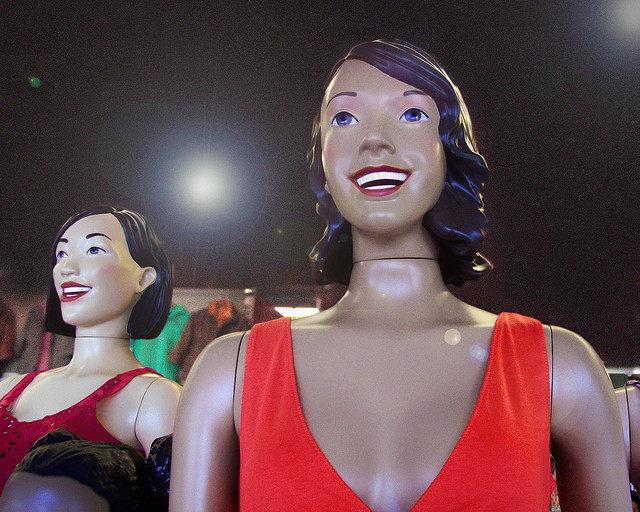
Or, anyway, that's the hypothesis. See, despite the fact that we've long treated it as a given, the Uncanny Valley isn't a proven concept. In fact, writes Rose Eveleth at The BBC, the original 1970 paper that described the Uncanny Valley wasn't really based on research at all. It was more of an essay. An essay that nobody much questioned for 30 years. Since 2000, there's been some actual research on the subject, and the results are very mixed. Some studies can find evidence of the Uncanny Valley. In others, though, it appears to not exist at all.
In one study, David Hanson of Hanson Robotics, in Plano, Texas, and his colleagues showed participants images of two different robots that were animated to simulate human-like facial expressions. The survey simply asked the participants what they thought of the experience. The vast majority (73%) liked the human-like robots. In fact, not one person stated that these robots disturbed them.Eveleth's piece is definitely worth a read. Not only does it challenge out accepted cultural wisdom, but it also suggests that there's more to what creeps us out than the simple concept of an Uncanny Valley is capturing. There might be other factors that determine whether a human-looking thing gives us the willies, or is no big deal. As we think about the future of robotics, figuring out what those factors are will become more and more important.
Hanson and his team then showed the participants a continuum of images, starting with a picture of Princess Jasmine taken from the Disney movie Aladdin. Over the course of six images, Jasmine’s face slowly morphed into that of actress Jennifer Love Hewitt. The idea of these facial progression studies is to try to observe the dip in likeability that Mori predicted between an obviously cartoon image and an obviously human one. The participants were asked to rank the acceptability of each picture in the series. But, again, rather than see a dip in the scores in the middle of the range – as the uncanny valley would predict – none of the images seemed to bother anyone.

No comments:
Post a Comment